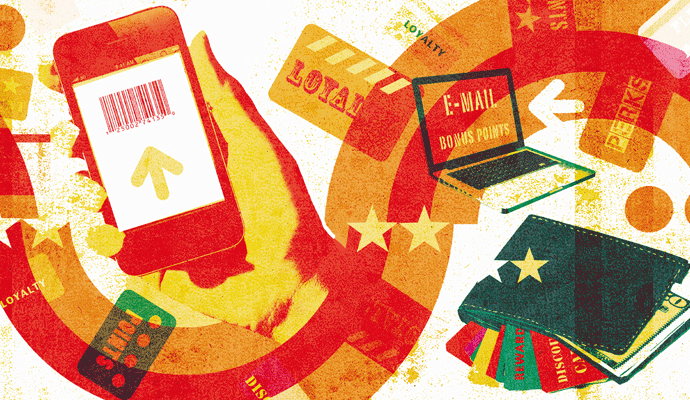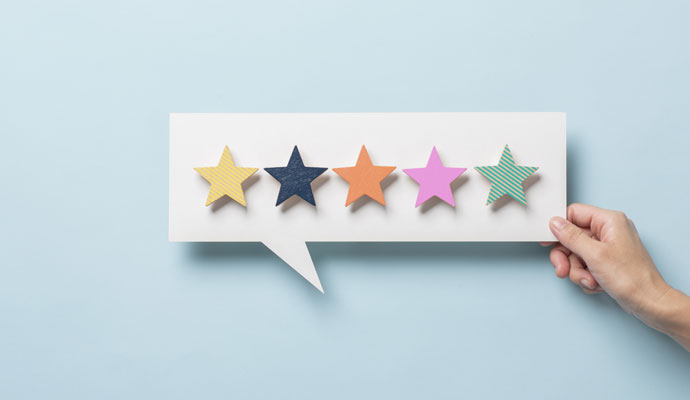When Customer Loyalty Programs Backfire
Customers who don’t hit the target to qualify for a reward are apt to hold it against the company and make fewer subsequent purchases.
Bottom Line: Customers who don’t hit the target to qualify for a reward are apt to hold it against the company and make fewer subsequent purchases.
Loyalty programs have exploded in popularity in recent years as firms seek new ways to keep customers coming back — both to the benefit of those companies and to the detriment of their rivals. Companies can turn a frequent-purchase card into a powerful marketing weapon by inducing customers to shop exclusively with them, and by promising a reward in exchange for their repeat business.
Despite the proliferation of loyalty programs, little research exists on what consumers think about reward structures, whether all customers react similarly to the plans, and how failing to hit the requisite target to earn a reward affects program members’ future business with the firm. On the face of it, this lack of research isn’t so surprising. Companies have a tendency to think only of the benefits that come from a loyalty program — after all, the thinking goes, enticing consumers to shop more at your store can only be a good thing.
But that’s not necessarily true. There’s a significant downside to inviting consumers to participate in a frequent-shopping program, a new large-scale study finds. Rewards programs are usually judged by the customers who earn the promised bonuses or discounts on future transactions. They have the great stories to tell in commercials, on billboards, or in pop-up ads. But what about the consumers who don’t reach the target? They are not neutral, according to the authors. These consumers are less likely to do subsequent business with the rewards program provider, the researchers found, suggesting that loyalty programs might, in some cases, do more harm than good.
The authors collaborated with a prominent hotel chain to obtain information on more than 95,000 customers. For the purposes of the study, the customers were divided into two groups of roughly the same size. Half of the customers were in the loyalty card cohort and were given the chance to earn bonus points over an eight-month period. The others — the control group — were not given the opportunity to participate in the loyalty program.
Customers’ hotel stays were tracked for the eight months before, during, and after the loyalty program period (24 months in all). The observation phase before the start of the rewards promotion allowed the authors to calculate the propensity of participants in both the control and experimental groups to book stays at the hotel during a “normal” time. In this way, they could determine how attaining or falling short of a reward affected consumers’ subsequent booking patterns. The promotional effort analyzed was one used widely in many different industries, with a particular reward.
The authors also varied the thresholds required for customers to attain a perk. Participants in the experimental group were asked to increase their nights stayed at the hotel by either a low or high percentage relative to how often they’d stayed there prior to the promotional drive. For example, a customer who had stayed 10 nights during the baseline period might have to book 12 nights (a “low” 20 percent increase) or 14 nights (a “high” 40 percent increase) to earn a reward.
Customers were also categorized as either platinum, gold, or club members, depending on how often they’d stayed at the hotel in the past, so the authors could explore how consumers with different status and relationship histories with the chain reacted to the outcomes of the loyalty program.
Overall, the authors found, customers who earned the reward did, in turn, tend to spend more money on future bookings with the hotel, relative to participants in the control group. However, only 27 percent and 21 percent of consumers reached the low- and high-threshold goals, respectively. Such programs should by design reward only the most devoted and loyal customers; after all, free nights at a hotel, room upgrades, or other perks shouldn’t be handed out willy-nilly. But consumers who failed to get a reward weren’t merely passive, the study found — failing to qualify for the promotion actually had a negative effect, causing customers to stay fewer nights than their counterparts in the control group. And if more than 70 percent of customers shooting for a loyalty bonus miss the mark and are unlikely to simply shrug off their disappointment, it’s bad for business.
Indeed, taking previous booking patterns and the behavior of the control group into consideration, customers who qualified for a reward spent about US$765, on average, more than they normally would have over the eight months following the promotional drive, booking about nine nights over three stays, the authors calculated. In contrast, those who missed a reward mark reduced the nights they spent at the hotel by almost six and contributed $377 less than the authors had expected.
Intriguingly, customer status plays a crucial role in determining how individuals react to disappointment. Platinum members, ostensibly the most loyal, appeared to be barely influenced by attaining a reward — in other words, it didn’t increase their bookings much — but were the most put off by falling short of the mark (they tended to reduce their subsequent stays the most).
There’s a significant downside to inviting consumers to participate in a frequent-shopping program.
Although it might seem counterintuitive that the most faithful customers would be so fickle, the authors suggest that the explanation is deeply embedded in concepts of relationships and reciprocity. Customers belonging to a higher tier have already invested heavily in a company and expect bigger rewards in return; the denial of a reward that failure brings therefore carries much more disappointment, and perhaps a tinge of resentment that makes them want to “get back at” the company, the authors suggest. For lower-tiered customers, however, goal attainment and the subsequent reward may seem like a welcome bonus, and failure not as big a deal.
The authors note that the loyalty program did have an ultimately positive effect on overall consumer purchasing, but because the type of program studied is popular with many industries, and in light of the risk of mixed results, companies should think carefully about how they structure such promotions. They need to account for both success and failure rates of rewards attainment.
Source: “Enduring Effects of Goal Achievement and Failure within Customer Loyalty Programs: A Large-Scale Field Experiment,” by Yanwen Wang (University of Colorado–Boulder), Michael Lewis (Emory University), Cynthia Cryder (Washington University in St. Louis), and Jim Sprigg (InterContinental Hotels Group), Marketing Science, July–Aug. 2016, vol. 35, no. 4






